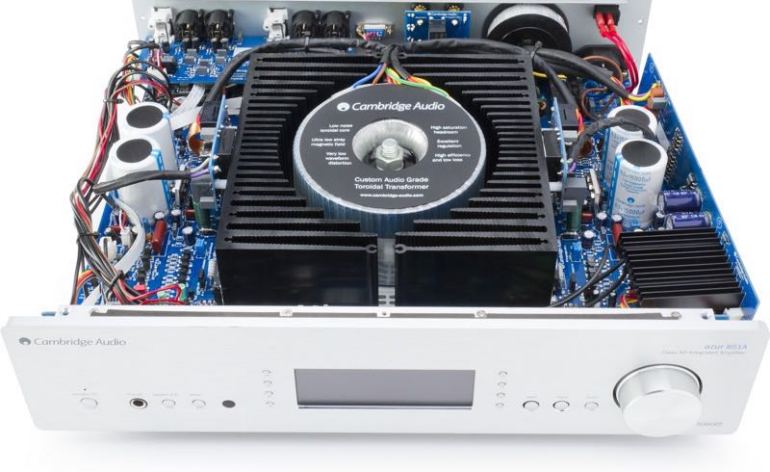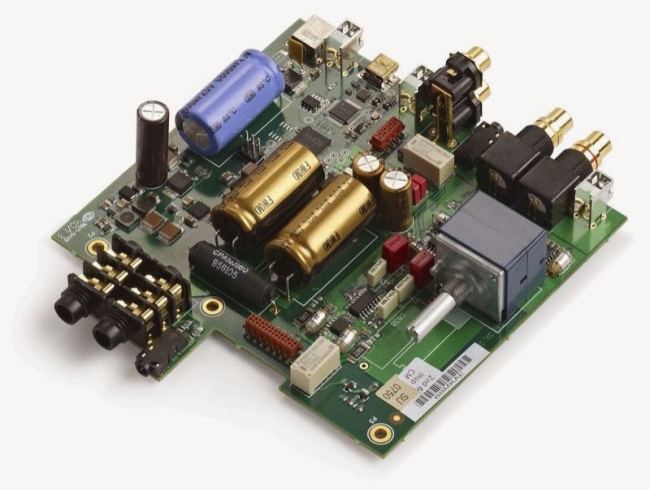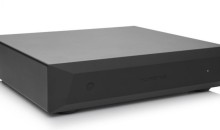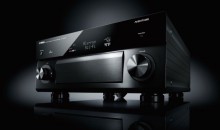Audiogurus Answers: What is an Amplifier?
Answering the question “What is an amplifier?” is is a little like trying to explain what “locomotion” means. Are you talking about trains? A vehicle? The act of walking? Amplifiers can refer, in the AV industry, to preamplifiers, separates components, integrated amps, headphone amps, or even the amplification on an AV receiver. In short—there are a lot of different kinds of amplifiers. One thing is for certain, however: An amplifier takes a signal of one particular voltage or amplitude and raises it to another. Here’s how those various types of amplifiers above do this, for example:
- Preamplifiers
These take an incoming line level signal and “ready” it for use with an external amplifier (see the next item “separates component” below). A preamplifier is just that—the device that comes before an amplifier that takes one or more signals and allows you to set volume, processing and other tweaks before sending it on to be amplified for playback on speakers, headphones, or some other output device.
- Separates component or dedicated amplifier
A dedicated amplifier is a separate component that doesn’t include audio or video switching circuits, a tuner, networking, or any other component that isn’t directly related to taking a line level signal and raising the output to prepare it for playback by speakers or (in lesser cases) headphones. These amplifiers can be tweaked for use in front-of-house (live) sound, home theater, recording studios, or any other configuration or setting as needed. They can be digital or analogue in nature and they can be matched or ganged to the number or type of speakers for which they will be paired. A dedicated amplifier can power a single driver in a speaker (in fact, it can be located inside of a speaker cabinet as in the case of a subwoofer or powered monitor), or it can power an entire speaker system or cabinet.
- Integrated amplifier
Integrated amplifiers are amplifiers with a preampfification circuit that can handle basic switching between sources as well as some rudimentary processing to readily connect a set of sources to an amplifier (see above). An integrated amplifier is like a preamplifier and a dedicated amplifier in one.
- Headphone amp
A headphone amp is, as you’d imagine, a device that takes a line level signal and better prepares it for the impedance and levels required by headphones—be they higher quality or otherwise. While many high-quality headphones actually require a headphone amp in order to operate at spec, just about any headphone will see improved detail, dynamics, and clarity when using a headphone amp. Headphone amps can be sourced by line level analogue audio signals, digital audio, or can replace the DAC in a computer through the use of a USB connection that bypasses the low quality analogue audio output.
- Stereo or AV receiver amplifier
An AV receiver or stereo amplifier offers robust audio and video switching and processing, but also includes from two to nine amplifiers (or more) to power an entire home theater system. An AV receiver is a preamplifier, audio/video processor, and multi-channel amplifier all rolled into one.
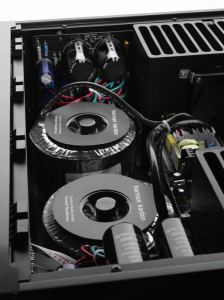 While those are the different formats an amplifier can take (there are more, but for home theater these are the most common), the question What is an amplifier? takes a bit more explanation. Let’s start with a breakdown of what an amplifier does, and how it accomplishes its task. This won’t be a college-level course, but it should answer some basic questions regarding how voltage and amplitude get stepped up in order to drive speakers and headphones.
While those are the different formats an amplifier can take (there are more, but for home theater these are the most common), the question What is an amplifier? takes a bit more explanation. Let’s start with a breakdown of what an amplifier does, and how it accomplishes its task. This won’t be a college-level course, but it should answer some basic questions regarding how voltage and amplitude get stepped up in order to drive speakers and headphones.
With respect to electronic components, sound is represented by voltage and current. On the front end, sound is captured by it moving a diaphragm and being captured in either analogue or digital form. In this way, music and soundtracks are stored as representations of their original sound. Mostly this occurs in the digital domain these days. Amplification is the process of taking these representations (like in a WAV or MP3 file, or from a Blu-ray disc or CD) and transforming that representation back into an analogue waveform and then pushing it hard enough to reproduce a close approximation to the original sound.
An amplifier is really just taking one form or representation of a sound (the input circuit) and turning it into another (the output circuit). A good quality amplifier does this with great accuracy and precision, while a less expensive one may take “shortcuts” to get the job done. A lot of different components make up an amplifier, but essentially you are talking about a device that uses a separate power source to amplify a smaller representation of sound into a larger one. The current acts as a carrier wave to amplify the original source into something that can get work done (the load)—like move the coils on a speaker system and produce audible sound.
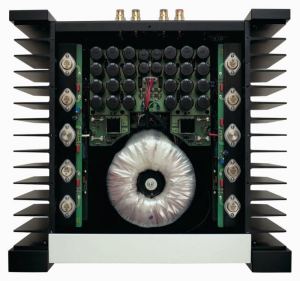 All of this audio signal amplification generally takes some energy—and that means heat. There are different types of audio amplifier classes that address the way amplifiers do this. Each has its own varying levels of function, popularity, efficiency and style. Some types of amplification can offer tremendous quality, such as Class A amplification—but it comes at a cost of generating a lot of heat and wasted power (it’s basically on all the time). Other amplifiers compromise, like Class AB, while still others (Class D) run at extremely high levels of efficiency compared to their Class A and AB counterparts. That topic is really a whole other discussion, and we invite you to hit the link at the head of this paragraph for more on amplifier classes. Suffice it to say, amplifiers use transistors as a major component to stepping up power. And transistors get hot when they’re used. As a result, heat dissipation is a big deal when it comes to amplifiers that have less efficiency (and efficiency has very little to do with quality in the case of audio amplifiers).
All of this audio signal amplification generally takes some energy—and that means heat. There are different types of audio amplifier classes that address the way amplifiers do this. Each has its own varying levels of function, popularity, efficiency and style. Some types of amplification can offer tremendous quality, such as Class A amplification—but it comes at a cost of generating a lot of heat and wasted power (it’s basically on all the time). Other amplifiers compromise, like Class AB, while still others (Class D) run at extremely high levels of efficiency compared to their Class A and AB counterparts. That topic is really a whole other discussion, and we invite you to hit the link at the head of this paragraph for more on amplifier classes. Suffice it to say, amplifiers use transistors as a major component to stepping up power. And transistors get hot when they’re used. As a result, heat dissipation is a big deal when it comes to amplifiers that have less efficiency (and efficiency has very little to do with quality in the case of audio amplifiers).
Play some “whisper down the alley” sometime…and see if your ending message is the same as when it started. Amplification has the same issues. When you’re boosting an input signal, you’re bound to pick up some “additives” along the way. These hitchhikers are called distortion—and they can ruin your sound. Good quality amplifiers for home theater, headphones, and live sound will minimize distortion and give you good quality output that matches the input signal very closely—even though it’s been bumped up several times from input to output.

OK, so we simplified it a bit…The truth is, there is a lot to what makes an amplifier really work. Designing good amplifiers is, after all, what a lot of highly-talented people do for a living.
That’s it for the layman’s article. You can really delve deeper into the topic of what is an amplifier, but I think this explanation will cut it for 90% or more of our readers. If you’re really into this stuff, electrical engineering principles will take you the rest of the way there—and there are entire degrees you can get that deal specifically with these topics.
If you appreciate all the hard work that went into that headphone amplifier or AV receiver you’re using, then, in the end, this was all worth it!

